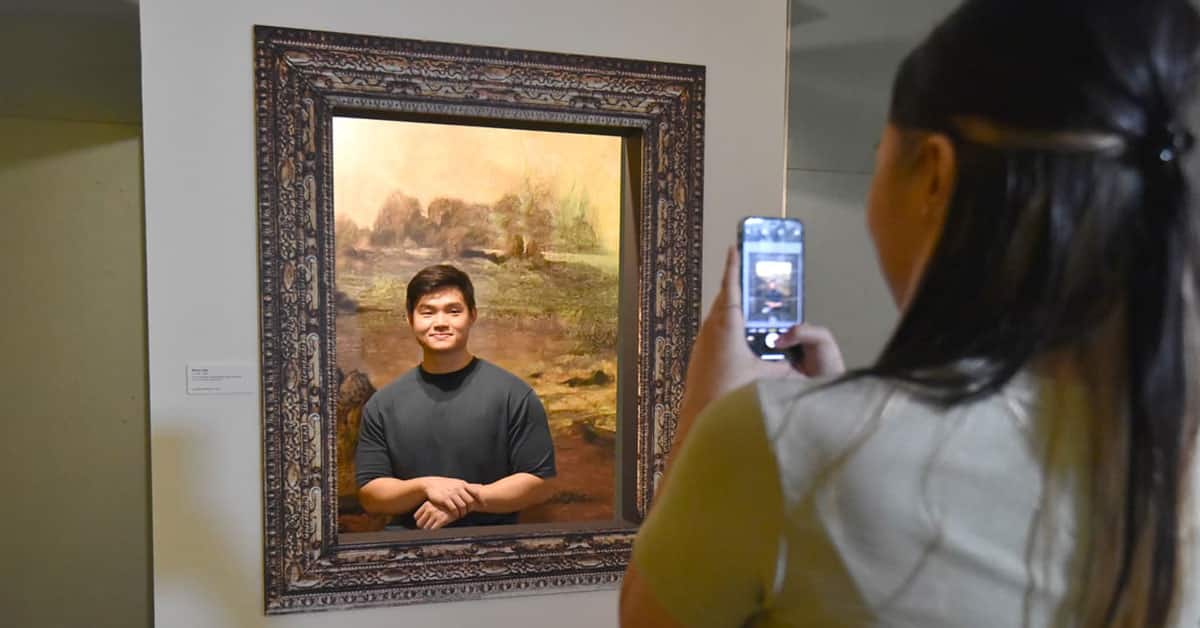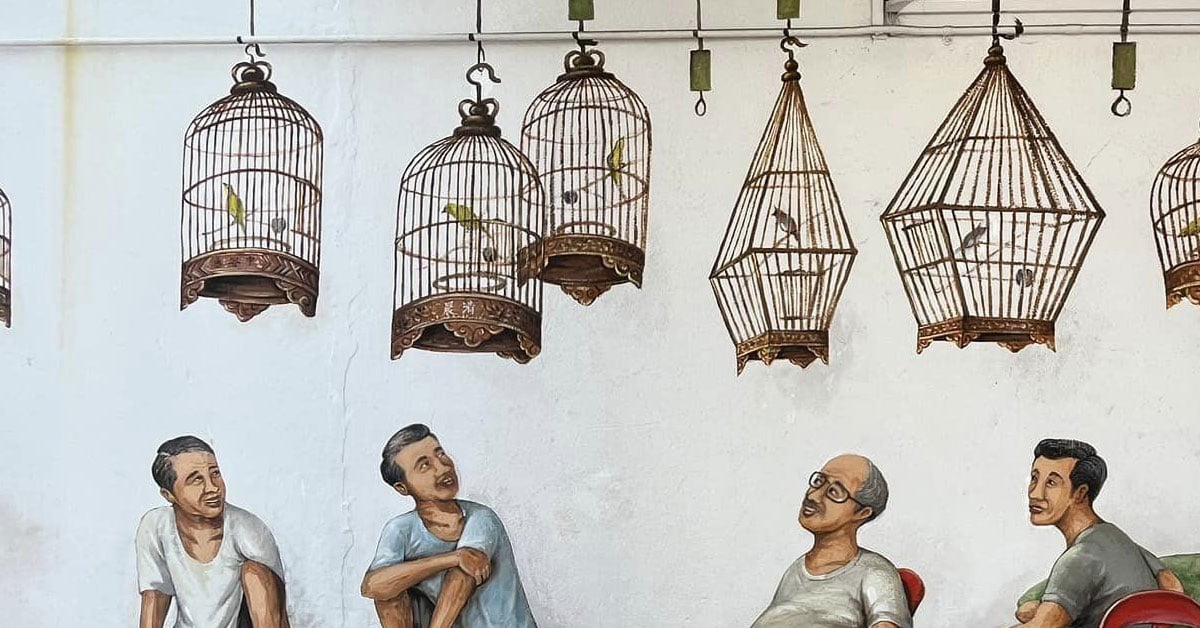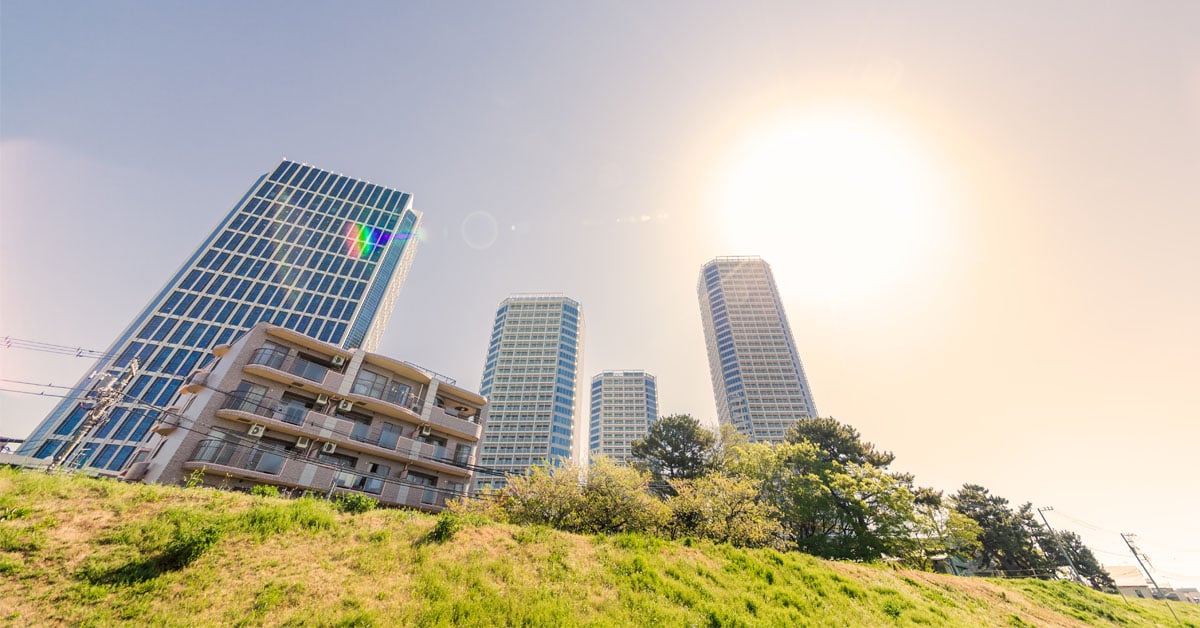All throughout your school life, you may have been told by your parents or various teachers that science and art are two separate disciplines that you should wisely choose between.
Well, that actually couldn’t be further from the truth, for art cannot exist without science, nor can science exist without art.
Don’t believe me? Just ask Leonardo da Vinci, then.
And the best part? You don’t even need a passport. There’s actually an interactive da Vinci exhibition right here in Singapore.
Here’s 10 facts about the outstanding man himself that you can discover through the 10 zones of the exhibition, to be held at the Science Centre from now until 2 Jan next year.
1. Who Is Leonardo Da Vinci?
No, he’s not the actor, that’s di Caprio.
Leonardo da Vinci was born in 1452, living through the Renaissance period, and he was the famed artist and inventor who made the Mona Lisa come to life.
He would have been the perfect son if he was born in an Asian family for he wasn’t just an artist, but also an architect, an inventor, a military engineer, and even a draftsman on top of being a renowned painter and sculptor.
2. Studied Human Anatomy
Have you ever wondered how human bodies work and why your body does what it does?
Everyone’s probably had those thoughts running through their mystery of a mind before, which da Vinci decided to seek the answers to.
Using a mechanical activity, da Vinci attempted to study the function of different human body parts and the behaviours that come along with it.
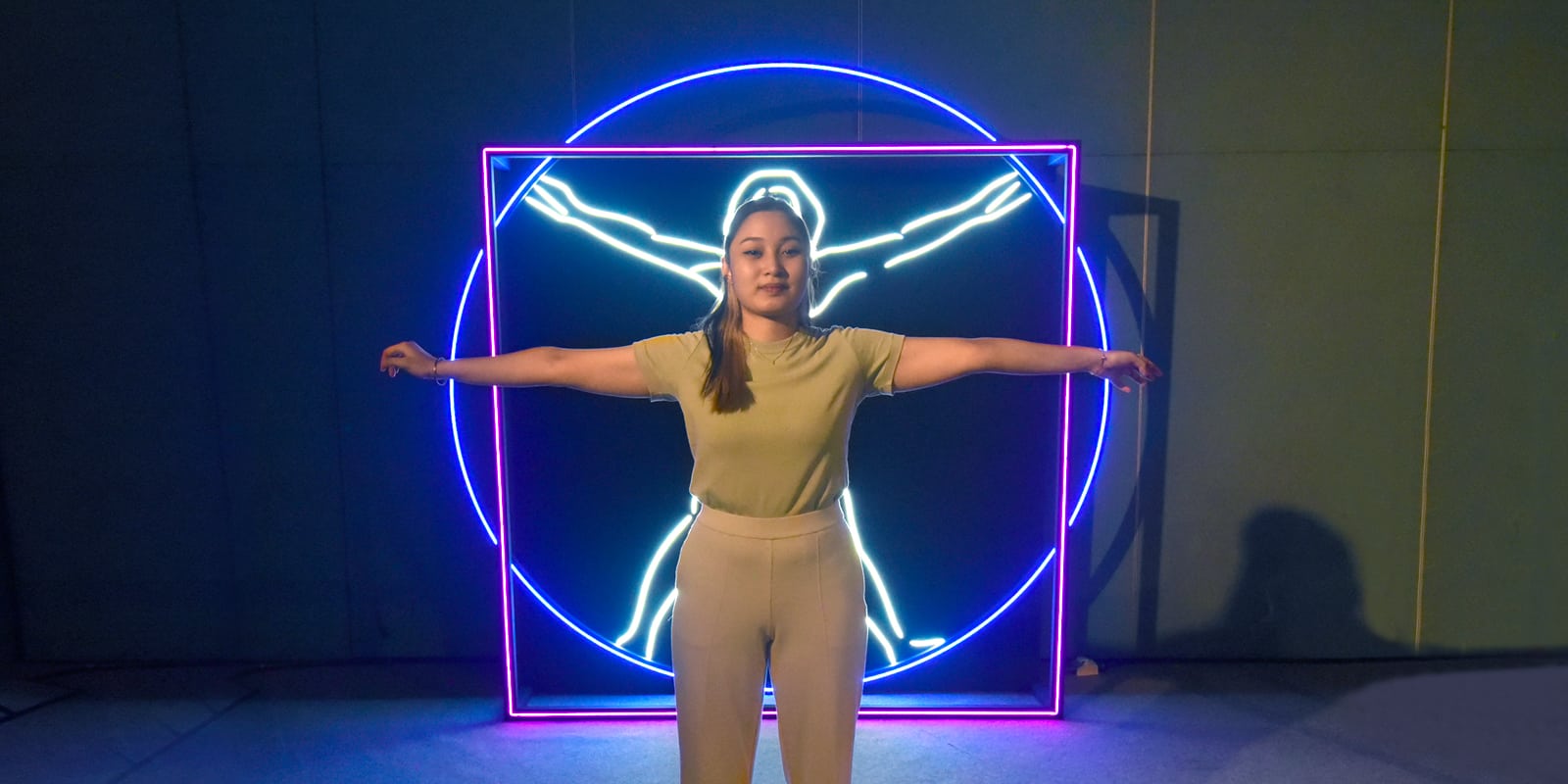
He even managed to sketch out the first accurate description of the human spine and several other human bodily functions, which were nothing less than legendary.
3. Master Of Painting
Like you probably have realised during art classes, painting isn’t a simple subject at all.
Yet, da Vinci was considered a master during his time of several techniques like chiaroscuro, which uses light and shadow to create 3D perspectives.
Additionally, many of his paintings utilised the sfumato technique, where shadows created soft and darker lighting away from the focal point.
These included famous paintings like The Virgin of the Rocks, Lady with an Ermine, and Salvator Mundi’s portrait, all replicated in the third zone of the exhibition for viewing pleasure.
4. Played With Physics
Long before the apple fell on Isaac Newton’s head, da Vinci was already on the path to discovering natural laws of the world through mechanics.
Observing natural occurrences allowed da Vinci to replicate the patterns of nature through mechanical inventions like the pulley, spiral springs, and even automatic locking systems you may be using in your house today.
5. Even Studied Optics And Music
The fifth zone of the exhibition lays out da Vinci’s work that resulted from his curiosity of audiovisual functions.
Understanding light, shadows, and reflections are important tools that artists wield in communicating one’s art, so he launched an extensive study into this discipline.
Da Vinci was one of the first to realise that lenses and mirrors could be made use of to view heavenly bodies, despite the invention of the telescope only occurring a 100 years later.
One can explore the room of mirrors and operate a light projector here.
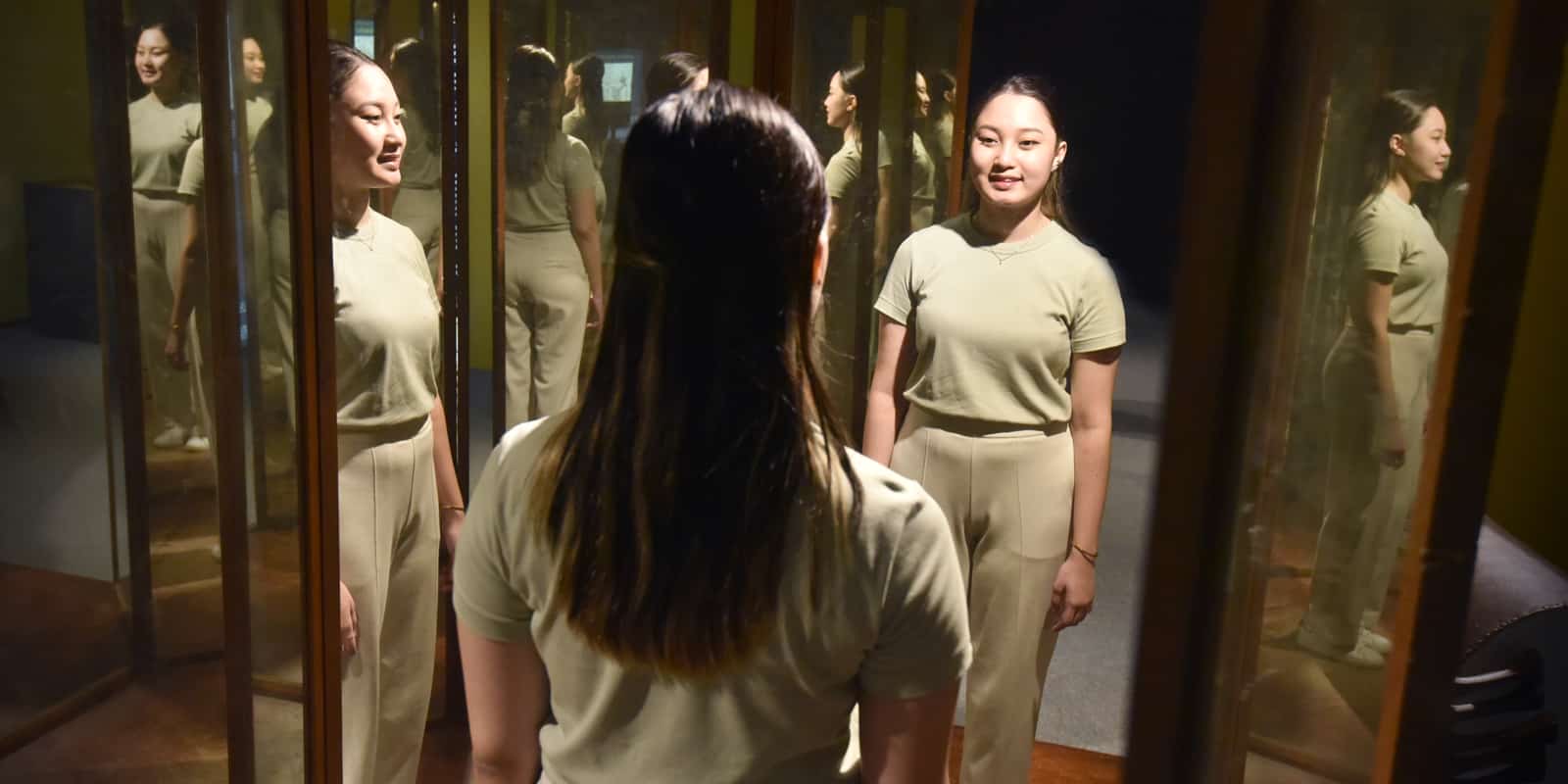
Music machines were also blueprinted by him, giving rise to the mechanical drum and portable piano that can be found in the zone.
6. Made Machines For War
Really, what did this man not do in his lifetime?
In order to earn some profits so he could devote all his time to the arts, da Vinci decided to dabble in inventing war machines and selling them.
As he only used rather expensive materials, he sold them to nobles such as Pope Alexander VI’s son who were at the forefront of the 15th century Italian wars for a rather high price.
Da Vinci’s war inventions like the canyon, gears, sprockets, rotating bridges, and strategic games with ropes and recoiling pulleys live on in the exhibition’s war zone.
Just be careful when you’re around, yeah?
7. Believed Humans Could Fly
Although it’s been a long time since most of us were last flying on a plane, we have da Vinci to thank for the groundwork that allowed us to do so.
The flying machine was invented after he tested many theories after studying the flight patterns of birds and how they could be applied to humans.
He believed that the only thing that was holding us down, besides gravity, was the lack of power required to lift a human’s body weight for our strength to do so was insufficient.
After his research, documented in this zone, came the first few gliders, airplanes, helicopters and parachutes that allowed humans to fly high in the skies.
8. Helped Man Through Civil Engineering
One fine day, da Vinci woke up and thought that if human bodies were just like machines, why not there be machines that help human bodies do its job, but better?
The machines in question are what we now see in construction sites, like forklifts, cranes, drills and excavators, that da Vinci designed in his extensive notes.
His aim was to simplify difficult human tasks by conserving human energy and effort – he did it so we didn’t have to suffer trying to pick up things much heavier than we can afford to.
9. Fascinated By The Power Of Water
71% of the earth we walk on is covered with water.
Da Vinci was drawn to the movement of rivers and streams back in his hometown, and wondered what else water could do in terms of harnessing its energy, describing it as “the pulse of nature”.
His work was what contributed to flood prevention and inducement systems through controlling the flow of water.
As shown in the zone, da Vinci’s extensive plans and designs of machines like the rowboat, hydraulic saws, wetsuits and even submarines paved the way for future water-related inventions.
10. And Finally, His Acclaimed Paintings
The Mona Lisa is as much of a household name as it goes, first painted by the artist himself in the 1500s and remains one of the most iconic masterpieces of all time in the world.
Although the original painting hangs on the walls of Paris’ Louvre Museum, you can still see a realistic replica of it in the exhibition here.
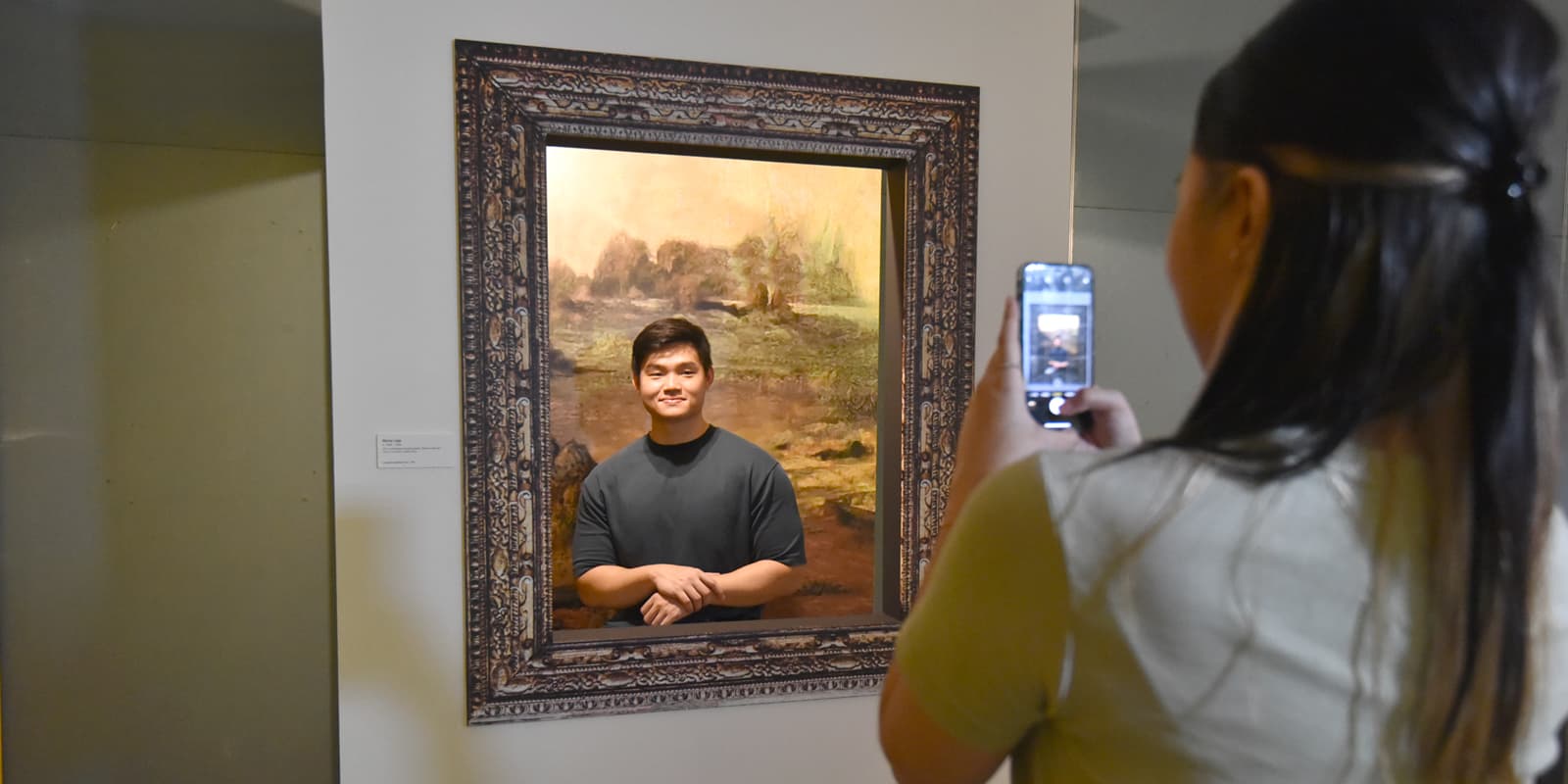
You can even try being Mona Lisa herself and try to portray that cryptic smile, if you’d like.
Yet another of his famed work, the depiction of The Last Supper, also hangs here as a replica not far from the glory of the original that resides in the dining hall of the Santa Maria delle Grazie in Milan.

Find Out More About the Man
More about da Vinci’s unique blend of the arts and sciences can be witnessed at the exhibition for adults and children alike, which spans over 10,000 square feet and is curated by Argentina-based Aurea Exhibitions in collaboration with Fundación De Historia.
Naturally, this comprehensive touring exhibition features the largest collection of da Vinci’s inventions for the first time in Southeast Asia.
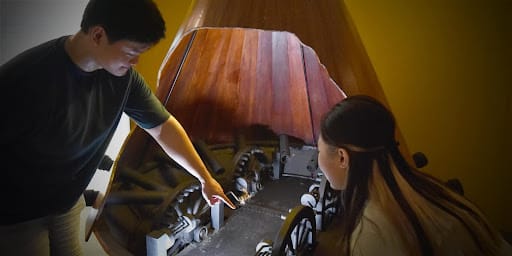
Their trained artisans interpreted and used da Vinci’s Codices to design and reconstruct his inventions, bringing the master’s two-dimensional plans to life for our audiences and young learners to explore.
With more than 50 life-size replicas of da Vinci’s inventions, 15 reproductions of his acclaimed fine art studies and many stunning displays showcasing his complex beginnings and lifetime achievements, the 10,000 exhibition is a hands-on exploration of the artist’s life, research and art.
You can purchase tickets starting from $19.90 for Singaporean and PR adults and $17.90 for children which includes a half-day pass to the centre at www.science.edu.sg/davinci.
Other Exciting Exhibitions At The Singapore Science Centre
Not really interested in how science and art blends together?
How about travelling millions of years back into the past to the polar landscapes of Antarctica before global warming was a thing?

Join scientists on their journey to discover how these prehistoric beasts survive and thrive in a 40-minute immersive movie experience at the Omni-Theatre, Singapore’s only dome theatre.
You can find out more about the new movie here.
Kids with an inquisitive mind might also appreciate a chance to visit the Science Centre’s newest exhibition, Energy Story, where they learn about solar energy, the energy cycle and more in a series of hands-on immersive displays.

You can read more about the exhibition here.
Fancy something a little more fun? How about spending your weekend in a real life maze of mirrors?

The Professor Crackitt’s maze of infinite reflections and hallways is guaranteed to leave your adrenaline pumping as you take each step cautiously, wondering if the path ahead is real or illusory.
Find out more here!
These are but the tip of the iceberg and there are many more exhibitions, activities and programmes running at the Science Centre.
Don’t believe us? You can check them out here.
And So, What Are You Waiting For?
Not sure what to do this weekend? Or looking to spend a fun weekend with your family? The Science Centre Singapore might just be the place for you.
- Address: 15 Science Centre Rd, Singapore 609081
- Opening Hours: 10am to 1pm (Last Entry: 12.15pm) / 2pm to 5pm (Last Entry: 4.15pm)
This article was first published on Goody Feed and written in collaboration with Science Centre Singapore.
